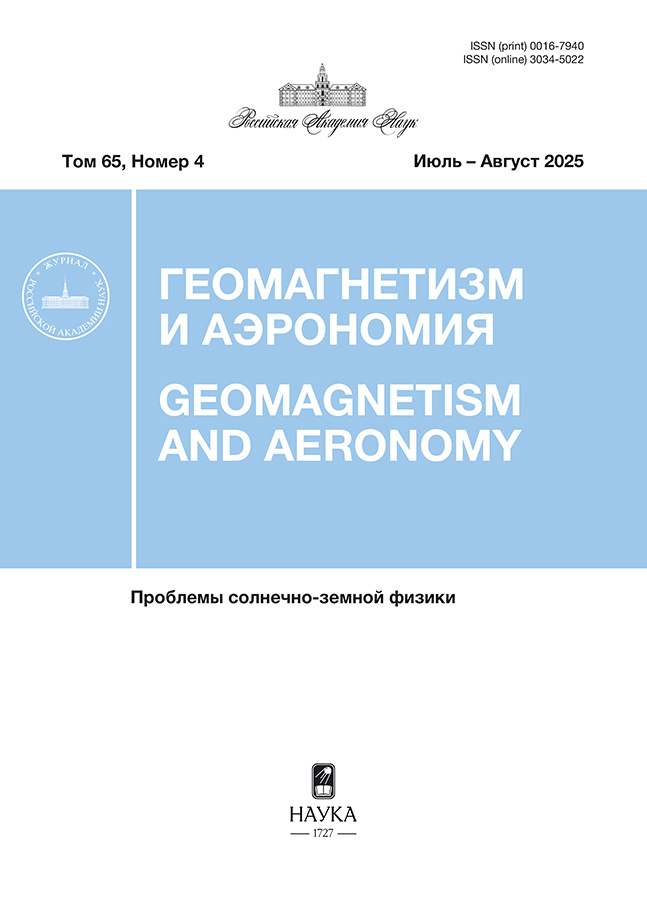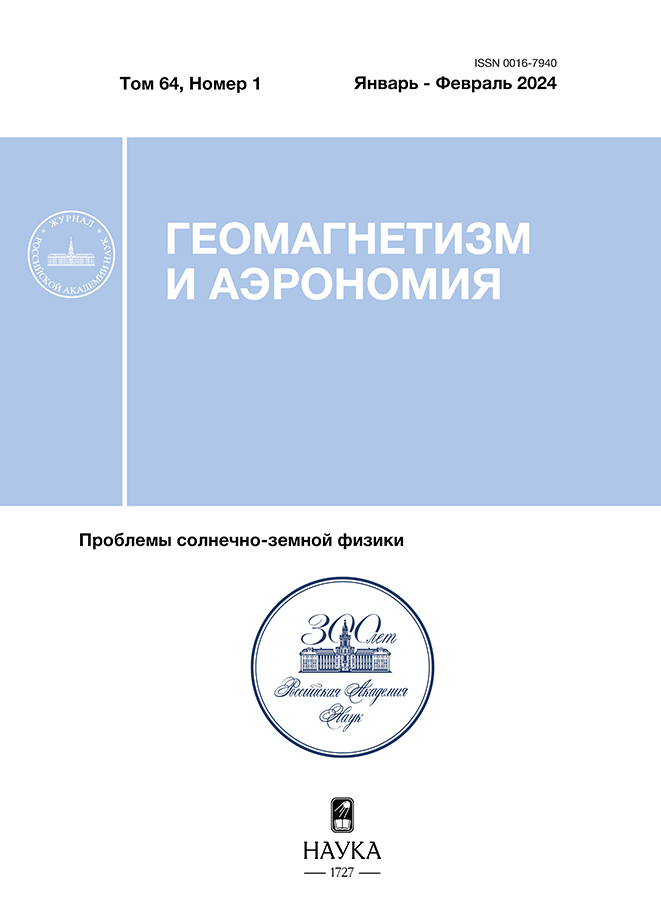Developing space-time model of the main geomagnetic field based on satellite data for the epoch 2015–2020
- Authors: Petrov V.G.1, Bondar T.N.1
-
Affiliations:
- Pushkov Institute of Terrestrial Magnetism, Ionosphere and Radio Wave Propagation Russian Academy of Sciences (IZMIRAN)
- Issue: Vol 64, No 1 (2024)
- Pages: 133-140
- Section: Articles
- URL: https://ruspoj.com/0016-7940/article/view/650963
- DOI: https://doi.org/10.31857/S0016794024010133
- EDN: https://elibrary.ru/GPJHPW
- ID: 650963
Cite item
Abstract
Based on measurements of SWARM satellites, a model of the main geomagnetic field for the 2020 epoch and a model of annual field changes until 2025 were built. These models were included in the international model of the main geomagnetic field IGRF-13. The method of data selection and model calculation is described.
Full Text
About the authors
V. G. Petrov
Pushkov Institute of Terrestrial Magnetism, Ionosphere and Radio Wave Propagation Russian Academy of Sciences (IZMIRAN)
Author for correspondence.
Email: vpetrov@izmiran.ru
Russian Federation, Moscow, Troitsk
T. N. Bondar
Pushkov Institute of Terrestrial Magnetism, Ionosphere and Radio Wave Propagation Russian Academy of Sciences (IZMIRAN)
Email: bondar@izmiran.ru
Russian Federation, Moscow, Troitsk
References
- Бондарь Т.Н., Головков В.П., Зверева Т.И., Чернова Т.А., Яковлева С.В. Построение моделей векового хода геомагнитного поля Земли по данным спутниковых съемок // Геомагнетизм и аэрономия. Т. 46. № 4. С. 554 —559. 2006.
- Гильберт В. О магните, магнитных телах и большом магните —Земле // М.: Изд-во АН СССР. 1956. Перевод издания: 1600 г.
- Головков В.П., Зверева Т.И. Разложение геомагнитных вариаций внутри года по естественным ортогональным составляющим // Геомагнетизм и аэрономия. Т. 38. № 6. С. 140—145. 1998.
- Alken P., Thébault E., Beggan C.D., et al. International Geomagnetic Reference Field: the thirteenth generation // Earth Planets Space. V. 73. № 49. 2021a. https://doi.org/10.1186/s40623-020-01288-x
- Alken P., Thébault E., Beggan C.D., et al. Evaluation of candidate models for the 13th generation International Geomagnetic Reference Field // Earth Planets Space. V. 73. № 48. 2021b. https://doi.org/10.1186/s40623-020-01281-4
- Beggan C.D. Evidence-based uncertainty estimates for the International Geomagnetic Reference Field // Earth Planets and Space V. 74. № 1. 1971. https://doi.org/10.1186/s40623-022-01572-y
- Chambodut A., Langlais B., Menvielle M., et al. Candidate models for the IGRF-11th generation making use of extrapolated observatory data // Earth Planet Space. V. 62. № 4. 2010. https://doi.org/10.5047/eps.2010.06.006
- Chapman S., Bartels J. Geomagnetism // Oxford University Press, London. P. 538. 1940. https://archive.org/details/in.ernet.dli.2015.212371
- Finlay C.C., Olsen N., and Tøffner-Clausenet L. DTU candidate field models for IGRF-12 and the CHAOS-5 geomagnetic field model // Earth Planets Space. V. 67. № 1. 2015. https://doi.org/10.1186/s40623-015-0274-3
- Friis-Christensen E., Lühr H., Hulot G. Swarm: a constellation to study the Earths magnetic field // Earth Planets and Space. V. 58. P. 351—358. 2006.
- Golovkov V.P., Bondar T.N., Burdelnaya I.A., and Yakovleva S.V. Comparison of Candidate Models for DGRF 1990 and IGRF 1995 // J. Geomag. Geoelectr. V. 49. P. 291—315. 1997.
- Olsen N., Finlay C.C., Kotsiaros S. and Tøffner L., Clausen O. A model of Earth’s magnetic field derived from 2 years of Swarm satellite constellation data // Earth Planets Space. V. 68. № 1. 2016. https://doi.org/10.1186/s40623-016-0488-z
- Olsen N., Holme R., Hulot G., et al. Оrsted Initial Field Model // Geophysical Research Letters. V. 27. № 22. P. 3607—3610. 2000. https://doi.org/10.1029/2000GL011930
- Petrov V.G., Bondar T.N. IZMIRAN candidate field model for IGRF-13 // Earth Planets and Space. V. 73. № 1. 2021. https://doi.org/10.1186/s40623-020-01312-0
- Sabaka T.J., TоffnerClausen L., Olsen N. and Finlay C.C. A comprehensive model of Earth’s magnetic field determined from 4 years of Swarm satellite observations // Earth Planets and Space. V. 1. 2018. https://doi.org/10.1186/s40623-018-0896-3
Supplementary files
Supplementary Files
Action
1.
JATS XML
Download (309KB)
Download (124KB)
4.
Fig. 3. Change in spherical harmonic coefficients for the period 2014–2020. Solid lines show the parabolic approximation of the data, dotted lines show the cubic one.
Download (122KB)
Download (91KB)
6.
Fig. 5. Changes in the coefficient of expansion of the magnetic field in terms of harmonic functions for the period 2014–2020.
Download (81KB)
7.
Fig. 6. Isolines of the distribution of the difference in D-components calculated using the IZMIRAN and IGRF models.
Download (88KB)

















